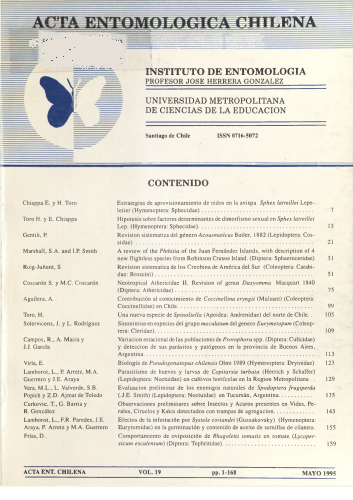Contenido principal del artículo
jul 18, 2022
Resumen
Observations made on the external morphology and reproductive behavior of Sphex latreillei Lep.
point out a sexual dimorphism in size, color of the IV metasomal segment and a number of behavioral
characters like the use of perchs by the males, chasing of flying objects, patrolling a limited area and
sleeping in cióse groups on the tops of trees. It is hypothetised that the larger males are selected
mainly by intrasexual selection. There is a high correlation between size and number of copulations
in males; the smaller specimens are chased away from the nesting area, but they are always present
in the population, which is probably due to an alternative pairing strategy in the marginal zone of the
reproductive area. They may resull from inadecuate nutrition at the larval stage or the haplo-diploid
mechanism of sex determination. The haplo-diploid system suggests an hypotesis on the origen of
sexual reproduction.


